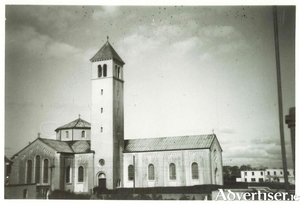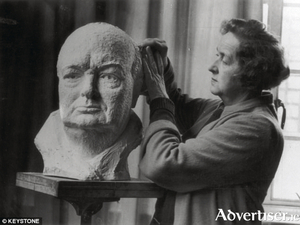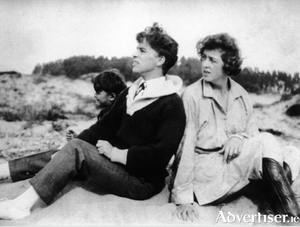Search Results for 'Clare Sheridan'
15 results found.
Clare Sheridan

“She was beautiful, fearsome, an English aristocrat, a communist spy, a loose woman, a middling novelist, a doting mother, an impossible parent, a successful sculptress, a respected journalist.” This was how Anita Leslie described her first cousin in My Cousin Clare, her wonderful biography of Clare Sheridan.
The end of an era

The Ó Máille family originally came from Portacarron near Oughterard which accounted for their Irish speaking background. Their landlord, Mrs Annie Nolan evicted them from their holding and they spent a number of years in temporary accommodation. When Mrs Nolan’s son wanted to run in an election, Isaac Butt, the Irish Parliamentary Party leader stipulated that his nomination would not be ratified until such time as his mother reinstated her evicted tenants and so the Ó Máille family were awarded a fine farm holding in Brackloon in the parish of Corofin, east of the Corrib.
The end of an era
The Ó Máille family originally came from Portacarron near Oughterard which accounted for their Irish speaking background. Their landlord, Mrs Annie Nolan evicted them from their holding and they spent a number of years in temporary accommodation. When Mrs Nolan’s son wanted to run in an election, Isaac Butt, the Irish Parliamentary Party leader stipulated that his nomination would not be ratified until such time as his mother reinstated her evicted tenants and so the Ó Máille family were awarded a fine farm holding in Brackloon in the parish of Corofin, east of the Corrib.
The Church of Christ the King

Around the year 1930, there were about 400 residents in Salthill and it was attracting large number of visitors and tourists who came in the summer. There was provision at the time for the building of some 100 homes. The population was growing but there was no church in the area. Any resident or tourist who wished to go to Mass had to travel into the Jesuit Church or St Joseph’s, or out west to the chapel in Barna.
Saint Patrick’s Church

This photograph of St Patrick’s Church and part of Forster Street was taken from the Galway/Clifden Railway Line overlooking James Mahon’s Field where the circuses used to be long ago. It was taken c1920.
‘If my sins were many they were interesting’

The Lausanne Conference of July 1932, attended by the former allied powers of World War I (Britain, France, Belgium and Italy), and Germany, accepted that the world economic crisis made continued reparations by Germany virtually impossible. Various long-term arrangements were made, but in effect it allowed Germany off the hook for the monetary compensation it had agreed to pay for its responsibility in starting the war. Germany was now free to rebuild its own economy. This was a very importance conference attended by the world press, among whom was Clare Sheridan.
‘Might you be Jackie Coogan’s brother?’

It was not only Winston Churchill who was cross and embarrassed at Clare Sheridan’s adventures in Moscow, London society was both alarmed and intrigued. It was surprised that a member of its upper class should have ventured alone into the viper’s nest. She was invited to balls and receptions mainly as a curiosity. One hostess told her outright that she was nothing but ‘a Bolshevik’, and a suspicion persisted that she was a spy, a fact that Clare did little to contradict. But despite a critical reception on the surface, her book From Mayfair to Moscow* was eagerly snapped up.
How the Bolsheviks got one up on Churchill

Even among the supreme leaders of Soviet Russia in the 1920s there was fear. When Clare Sheridan, the sculptor who spent her latter years in Galway, was leaving the Moscow War Ministry late one night accompanied by the powerful head of the Red Army and Commissar for Military Affairs, Leon Trotsky, armed soldiers on the bridge at the Neva, stood out on the road, and stopped their car.
‘How exciting it was to be a Catholic’

When Clare Sheridan bought Spanish Arch House in the late autumn of 1946, she was seeking refuge from an eventful life, to find peace and quiet to continue her sculpture, and needed time to give expression to her religious fervour. She had recently converted to Catholicism, and could not resist telling anyone who listened ‘how exciting it was to be a Catholic.’


